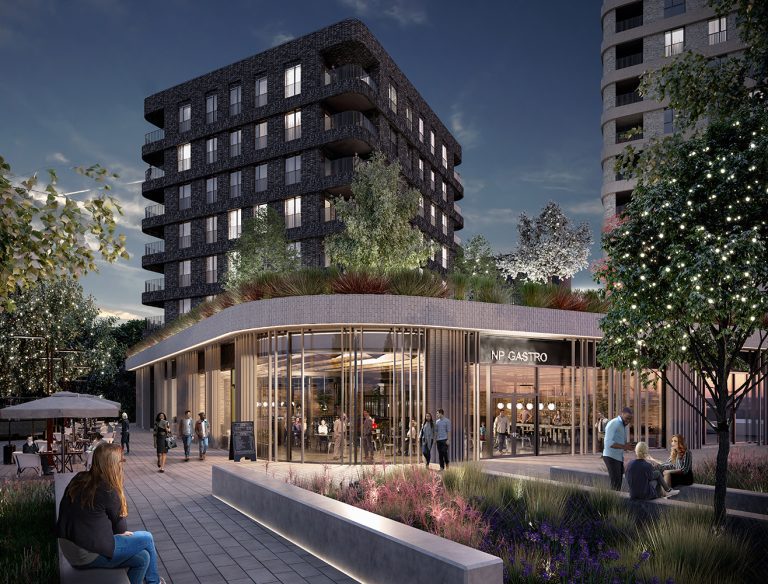A freestanding luffing jib tower crane has been increased in height to 105 metres by Bennetts Cranes on a luxury residential development in Fulham, London. This is understood to be the tallest freestanding luffing jib crane in operation in the UK currently, meaning it is not tied to the building. Bennetts, a specialist tower crane company based in Gloucestershire, erected the Raimondi LR 213 tower crane in August 2020 at Chelsea Creek, where a selection of Manhattan, one-, two- and three-bedroom homes is being built by St George, part of Berkeley Group. The height is not extraordinary for a crane, with tower cranes that are tied to buildings going to much greater heights than this. However, the crane is unique at this height because it is freestanding and a luffing jib crane. Typical freestanding luffing jib cranes would be between 30 – 60 metres tall for residential developments, with some occasionally reaching 70 metres or more. There are currently none known to be operating in the UK freestanding at over 100 metres. Between 3 – 4 April, a team from Bennetts Cranes used a 1,000 tonne mobile crane to add mast sections and increase the height of the LR 213 from 55 metres to 105 metres. The crane has base towers that are 4.6 metres square (more than double the typical freestanding crane tower of around 2 metres) to withstand the forces at such a height. Edward Seager, Managing Director of Bennetts Cranes, said: “When you double the height of a tower crane, the forces don’t just double, they square, so one of the ways to counteract that is to use a much wider tower base to spread the forces and make it more stable. This base, which is concreted into the ground, is extremely strong and has been brought in specifically for this job. He added: “We were pleased to increase the height of the crane to its final height of 105 metres over the Easter weekend, with good weather, enabling us to complete it within two days.” There has been a steady trend towards using taller freestanding cranes in recent years, driven by changes in cladding systems. Tying cranes to buildings can obstruct cladding being applied and some developers want to attach them during the build without having crane ties in the way. Mr Seager said: “Freestanding cranes can also provide more flexibility on site, and result in a quicker build time because you don’t need to climb the crane and tie it to the building. There are positives and negatives on both sides, because freestanding cranes are typically more expensive as they need to be reinforced to withstand forces, but the hire time can be reduced with a more efficient build.” The LR 213 is working on site with two further cranes including a LR 273, one of Raimondi’s newest luffing jib cranes with an 18 tonne maximum load capacity, and a 10 tonne capacity hydraulic Raimondi LRH174.







